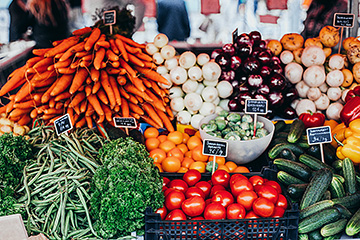


It shouldn’t be hard to know which foods benefit your health. Food manufacturers tend to make it more difficult with advertising containing words like fat-free or gluten-free in big letters to grab your attention. You start to identify fat and gluten as unhealthy and avoid food containing them. While gluten can affect people with celiac disease or gluten sensitivity, it’s not necessarily bad for the rest of the population. In fact, some foods containing gluten, like whole-grain bread, should be part of a healthy diet.
Choose whole foods.
Whole foods are foods that are least processed. They may be cooked, cleaned, sliced, and diced, but they don’t have added ingredients. If you want fruit for dessert, choosing canned peaches could be an option, but read the label first. It should be packed in its own juice or water with no added sugar or preservatives. Frozen fruits and vegetables may even be healthier than fresh ones. They’re picked at peak ripeness and immediately frozen, unlike most of their fresh counterparts. Those are picked early and spend hours being transported to the market. The exception is locally grown fruit and vegetables.
Keep your plate full of color. Colorful fruits and vegetables provide a variety of nutrients.
Start by piling fresh greens on your plate. Make it options like oak leaf lettuce, mustard greens, or kale. Don’t depend on iceberg lettuce since they have the least nutrients. All greens contain phytonutrients that improve your health. They tend to be high in vitamins and minerals. The more colorful your choices are, the better. Each color represents different phytonutrients and vitamins. Red beets, for example, are high in nitrates and help lower blood pressure. By including a variety, you’ll get a wider selection of benefits.
Choose quality protein and healthy fat.
Don’t recoil when you hear the word fat. You need fat for your body to function. Good sources of healthy fat include fatty fish, avocados, eggs, and butter made from the milk of pastured cows. Eggs and fatty fish are also a good source of quality protein. Choosing meat from pastured animals increases the benefits. They have more omega-3 and vitamin E. Egg yolks from pastured hens contain seven times more beta-carotene.
- Don’t forget fiber. There are two types of fiber. Soluble and insoluble. Soluble fiber feeds beneficial bacteria in your gut that provide many benefits. Insoluble fiber gives your stool bulk and makes it easier to have a bowel movement.
- Choose organic produce if the produce is on the EWG Dirty Dozen list. These are the foods containing the most pesticides, even after thorough washing. Spinach, kale, strawberries, and apples are examples.
- Avoid low or fat-free products. In yogurt, for example, when manufacturers remove the fat, they often replace it with sugar for flavor and additives for consistency and texture.
- The densest sources of nutrients in meats are organ meats. People frequently call the liver Mother Nature’s multivitamin. Choose organ meat from organically raised animals.
For more information, contact us today at Travel Trim
